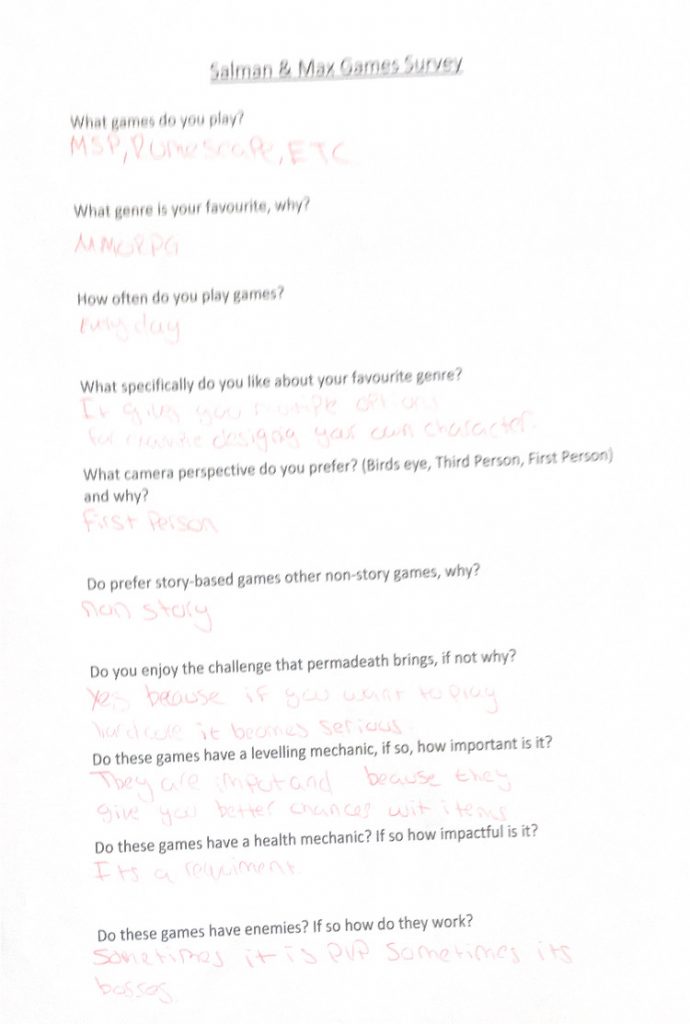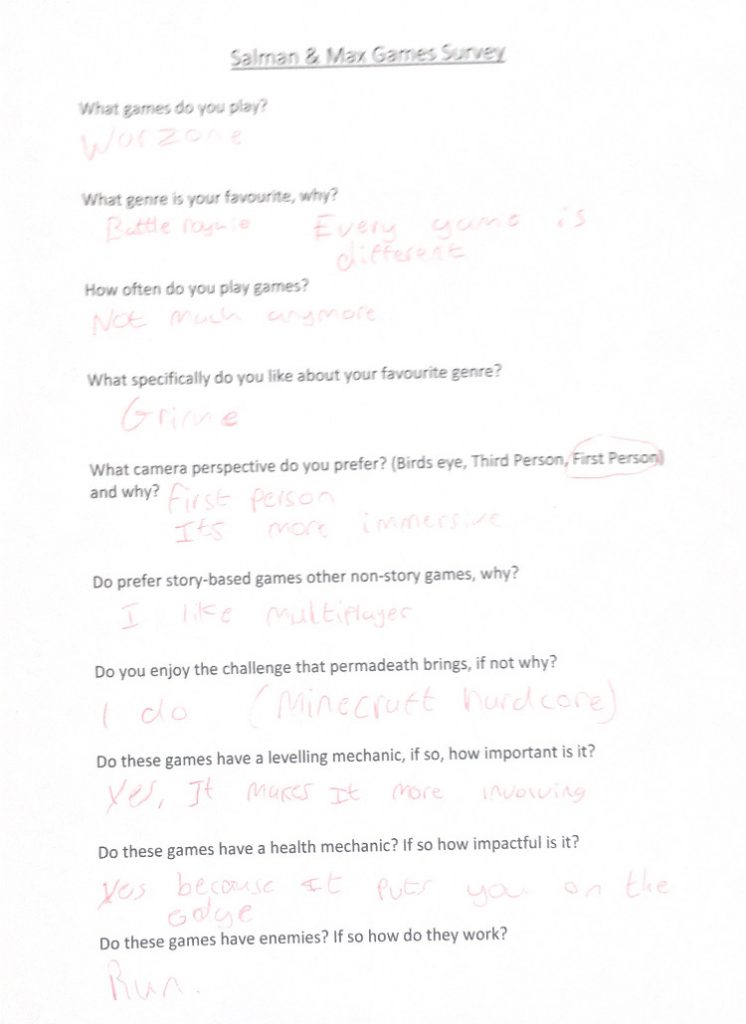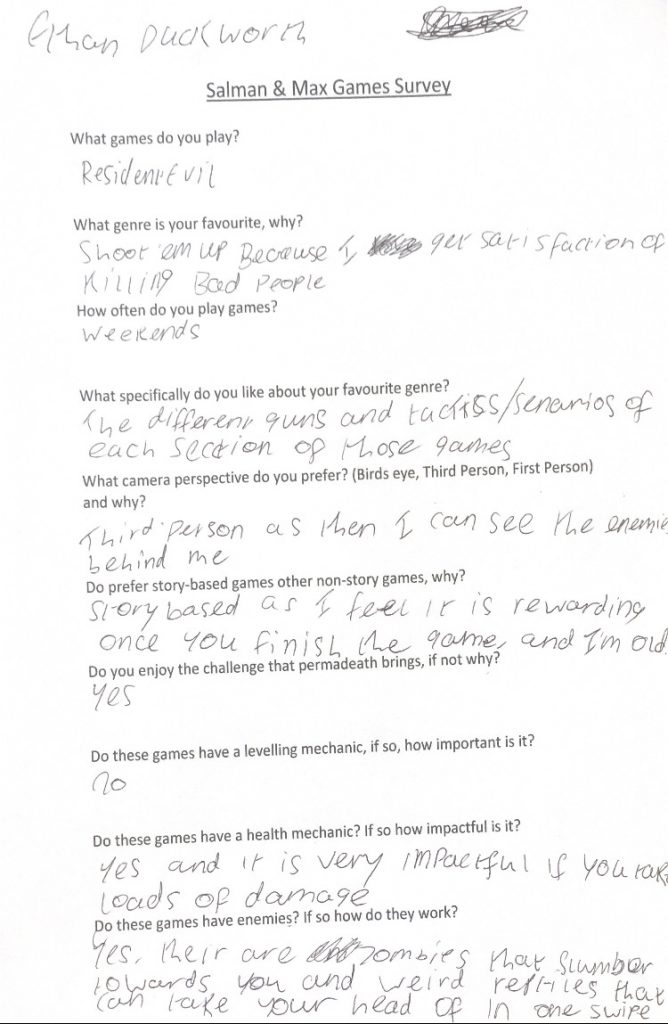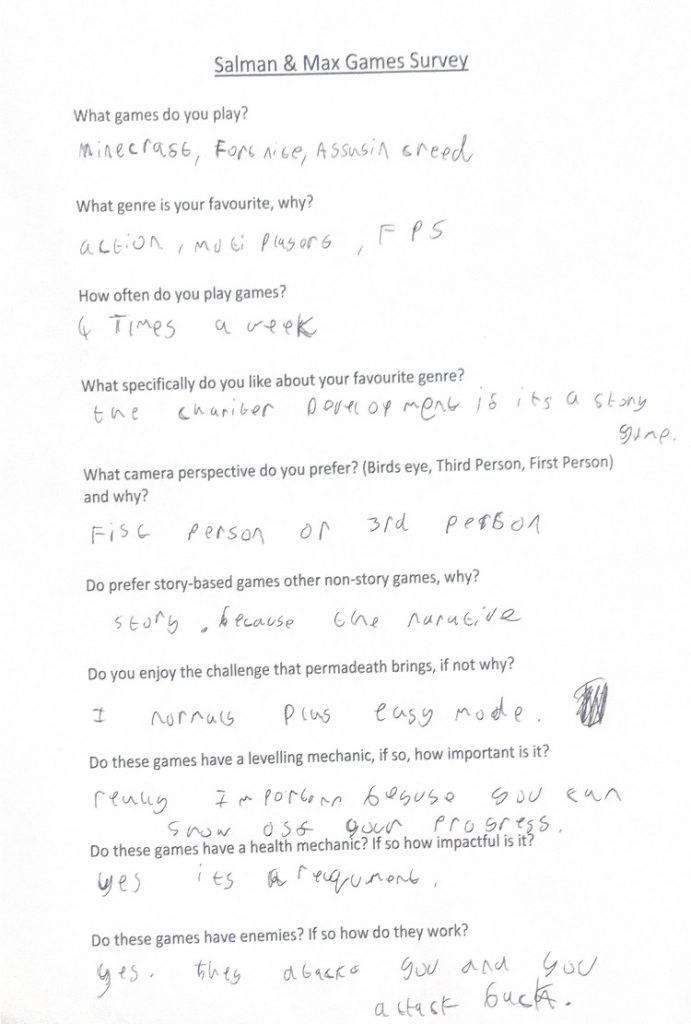To reinforce my games development I am gathering Primary research of which will help me develop my game as it will make sure that I have as much experience with these games before developing one.
The first game I decided to analysis was Enter The Gungeon, which is a 2D Rogue-Like Dungeon-crawler, which is much similar to the one we intend on creating, have a bullet-hell environment, meaning the player has to dodge and block/avoid incoming damage so they don’t risk death, we want our game to include various mechanics from ETG such as the rolling mechanic and health system.
I decided to compile footage of me playing the game and identifying key components of the game and what helped make it what it is i, such as rolling, character models and prop generation, I pinpointed how these aspects of ETG could be used in my own game, and how I would implement them, I also uploaded the video to Youtube for easy access, I learned various things from researching ETG and discussed the majority of them in the video.
The last game I looked into is Moonlighter, which is another Rogue-Like Dungeon-Crawler, I investigated this game as it includes a large amount of things I intend on having in our game, such as a savable death inventory, unique enemy attacks and reoccurring bosses.
I took various inspirations from the game Moonlighter, such as the custom boss mechanics and attack patterns, aswell as death inventory and some other various different things such as the randomly generated environments and solid cover, and random chests and treasure, the main aspect of moonlighter I took would be the bullet hell mechanic and how its used.
I also decided to host a focus group between myself, Salman, Vix and Nils, this helped me explain my idea further and help develop it in anyway I can, including receiving constructive criticism and noting problems with the project.
- I was initially asked by Vix what our game was about, to this we replied with what the game was focused around and how it was tied back to the pocket planet theme, and what we planned on achieving.
- We discussed our ambition to achieve creating 10 different levels, but also voiced the fact that this may be improbable due to the time constraints.
- We then discussed the roles of the two of us, Salman doing art and me doing Programming.
- After this we talked about the timescales, and how we would create the production schedule, discussing how we would update it to ensure we stay within the time limit.
- After that the next topic was the problems we would face, we talked about how the pre-production was important, and how timescales and constraints where an issue due to how long this may take, due to it being a game.
Overall doing this focus group helped us explore any problems we might face, any restraints and difficulties that may arise in production, what we wanted to focus on, ontop of this it also gave us 2 different outside opinions from 2 different people, one of which regularly plays games and one of which rarely plays them (Nils and Vix respectfully) allowing both me and Salman to understand these perspectives.
We also spoke off-video extensively about the problems that may arise in each of our projects, one of the major ones in ours being time constraints, and overstretching our capabilities (too much scope) and equipment, these are legitimate concerns which I am taking very seriously;
Time Constraints
As one of the two major problems discussed I saw it necessary to talk about it, as the name would suggest the problem is the time it will take to create this game, as games generally take a very large amount of time to create, even smaller ones requiring months if not years of development to fully release me and Salman decided to combat this by limiting the game to a few levels, essentially a test demo which still functions as a full game, this will help limit how much time it will take to create, and give us extra time to do written work.
Too Much Scope
Another problem that was discussed would be how large we decided to make the game, this could be how extensive the levels are, how many enemies their are, how many movesets, how many in-game mechanics such as collectables and mob drops, how many different rooms layouts ect, each of these takes a large amount of time to create and aren’t particularly easy to create either, after careful consideration we decided that we want a smaller game, essentially a test demo which we can continue adding too other the course of the project, with the core ideals still in place (these being the time travel narrative and the fighting different cultures.)
Equipment
Another one of the issues we discussed would be the equipment needed to complete this project, these being Unreal Engine, Garageband and Photoshop, Pixelart creators online and Youtube and Digitalspace for documentation, luckily college already supplies all of these on their computer, the problem arises with colleges hardware, the majority of our classes take place in a room which is entirely macs, and not a single one of these macs has Unreal updated/installed, meaning that I cannot create or continue creating and developing the game without having to go down to the game creation room (Jakes room) and do my work their, which is another problem as he often has classes in these rooms, fixing this is a large issue as I have brought it up numerous times to no difference, to solve this problem me and Salman may have to continuously leave after register to work elsewhere, in rooms which have computers which have the software we need.
Me and Salman gathered a few surveys for our classmates to fill in, these gave us an idea of what the general population think about rogue-likes and gaming in general, taking into account of things such as health mechanics, NPC mechanics and other things such as genres.




These surveys helped us understand which mechanics people enjoy, the first question involved which games the recipients play, this gives us a good understanding on what they enjoy playing, it then moves onto ask about their favourite genre, this could be implied from the games they play but now it is understood, this genre preference is essential as it allows us to understand which genres they may enjoy, allowing us to use this in our FMP, putting themes and rooms that may incorporate various elements from peoples favourite genres, such as a medieval room for people who like RPGS and a futuristic room for people who like SCI-FI.
- The next question asks the recipients how often they play games, this is helpful as it allows us to understand hw often people are generally playing, this lets us decide how often or how difficult items should be to acquire, and how much time should be put into acquired them, essentially painting a path into deciding how rare the RNG mechanic will be. (how often players get loot)
- The next question asks the recipients what specifically they enjoy about their selected genre, this gives us a deeper look into what these gamers enjoy about said genre, allowing us to pull these ideas and form them into something tangible in the game, such as a health mechanic ect.
- Onwards the next question asks which camera perspective these recipients enjoy, this allows us to understand what they prefer and why, allowing us to understand what makes these camera angles appealing to players, and allowing us to make any improvements on our own.
- The next question asks the recipients if they enjoy story based games, this helps us explore the possibility that our games may have a story, if we have time we may want to implement a whole overarching story to support the time travel mechanic the player experiences when completing a room and exploring the next one.
- The next question explores permadeath and what they enjoy/dislike about it, it helps us understanding the most optimal way to implement it, should we have permanent death for the character/losing all the loot, or just loss of loot, should the player have no progress saved, or partial progress? these questions allow us to think about these things more thoroughly.
- The next question involves the levelling mechanic that the majority of games have, asking the recipients if they enjoy the levelling mechanic, and why, most of the recipients said they enjoy the levelling mechanic as it makes them feel progression as they play, this is useful as it may make us justified in putting our own levelling mechanic, or something similar, to help players feel progression.
- The second to last question asks about the health mechanic, what it makes games feel like and how important it is, it seems the majority of players feel the health mechanic is essential as it allows them to feel more immersed as they have a goal (not to reach 0 HP) and without it they would feel somewhat lost, especially when fighting enemies.
- The final question asks the recipient if the game they are playing has enemies, most of the recipients said yes, and most also said they are hostile and approach the player and attempt to do harm, this is helpful as it reaffirms our belief that the enemies in our game will be non-dialogue approachable NPC’s which only goal is to kill the player.
Target Audience Research:
After a lesson on the 25th with Kulvinder, I worked with Viktoria and she mentioned something that was rather helpful, she had mentioned that I had done very little research on my target audience, whilst I had mentioned them and why I chose this audience in specific (12+) I haven’t explained some of the reasons I have chosen them specifically.
One of the reasons I chose this audience demographic was because they tend to like brighter environments, this is helpful as my game tends to have large amounts of brighter colours, and levels with lighter themes and enemies that are vibrant and visible with lots of colours, this tends to make younger audiences more invested as they won’t get bored faster by dull and depressing colours, which older audiences tend to prefer.
Another reason I chose this target audience is because it is a fast paced game which requires a fast reaction time, and since children around this age tend to have great reaction times, this is required as they need it to play the game effectively as they need to constantly be avoiding different enemies from all directions, this ties into the target demographic as this younger audience will be able to keep up with the faster paced gameplay.
One final reason I chose this target audience is because the simplistic pixel-art theme tends to resonate with younger audiences more, as they tend to enjoy pixelated environments as it’s easier on the eyes, specifically on younger people this is convenient as our game is easier to see and the enemies are therefore easier to see and fight, tying into the fast pace gameplay it is essential the player can see the enemies at all times.

Finishing up my primary research, I hope whoever is examining is finds it acceptable, it was very helpful in information gathering and the construction of my game, giving me many new ideas and concepts to play around with, it also allowed me to play some rogue-likes I used to play and experience them in a new light.

